As summer draws near, it’s the perfect time to plan a trip to Lori, one of Armenia’s greenest and most breathtaking regions. Imagine rolling hills, deep gorges, and lush forests stretching as far as the eye can see. Then, there is a village at the edge of a gorge with views that are spectacular.
Spring in Lori has its own magic, with wildflowers and fresh mountain air, but the weather can be unpredictable, and there are rain showers. Those who are not afraid of rainy weather are welcome, but the real season for hiking and seeing sights starts in May or sometimes June. The region truly shines. It’s the best time for visiting numerous churches in Lori. They all have their own charm, but also one thing in common is that they are surrounded by breathtaking nature.
This blog will explore the churches and monasteries that are worth visiting in Lori.
Sanahin and Haghpat Monasteries
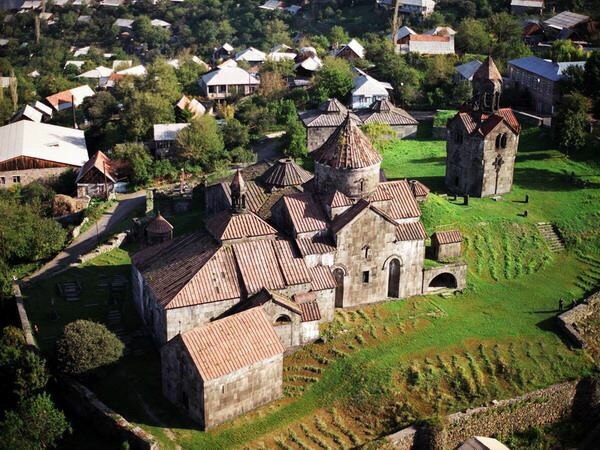
The twin UNESCO-listed jewels of Sanahin and Haghpat monasteries are a good reason to take a trip to Lori. These two masterpieces are great examples of Armenian medieval religious architecture and are full of stories and mysteries that only ancient monuments can offer.
Sanahin, whose name loosely translates to “this one is older”, is as legendary as it is beautiful. According to local legend, a father and son who were both master builders parted ways mid-project due to a quarrel. The son walked away, started work on another site, and Sanahin got its name from the father’s reminder: “This one is older than that.”
Just across the gorge is Haghpat Monastery was founded in 976 AD by Queen Khosrovanush, wife of King Ashot III the Merciful. It’s famous for its strong, fortress-like architecture.
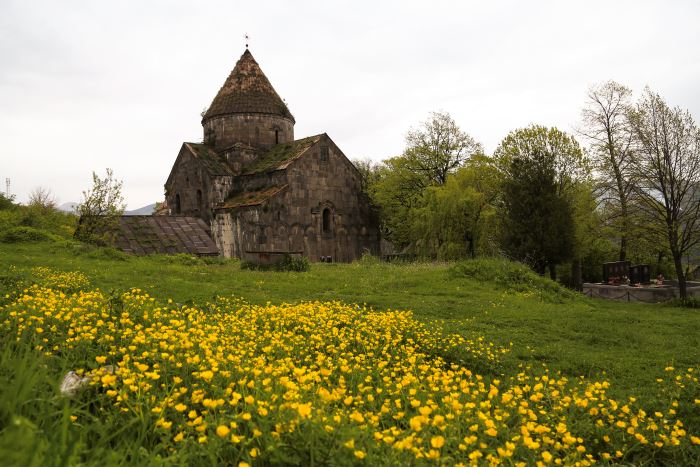
In addition to being a place of worship, monasteries in Armenia were hubs of education and academic life. For example, Sanahin hosted an academy where students learned theology and other disciplines. Besides the architectural beauty, there is a unique atmosphere that is accompanied by khachkars scattered around the monasteries and stunning natural landscapes.
Odzun Church
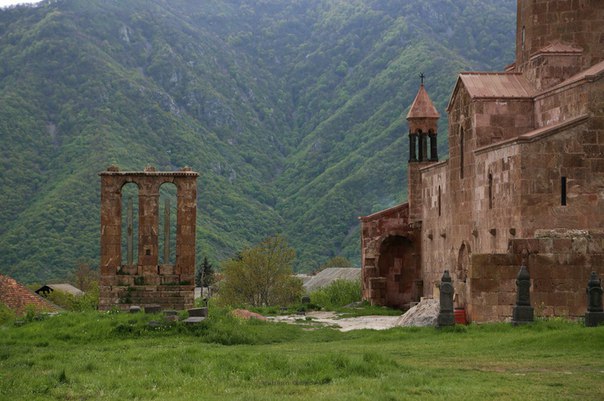
This church is located on a wide plateau over the Debed Canyon. Odzun is just 10 km south of Alaverdi. It stands as one of Armenia’s oldest and most unique basilicas, but is somehow less popular than Sanahin and Haghpat. However, it’s even older, since the church you see today took shape mainly in the 8th century. Local tradition says that Thomas the Apostle passed through Odzun in the 1st century, ordaining priests and burying sacred relics here, which is how the village got its name, deviating from the Armenian word “otsel” (to ordain).
Odzun Church is also tied to Hovhannes Odznetsi, a catholicos of the Armenian Church, who was born here. The basilica itself is a serene masterpiece of early Christian architecture, with graceful arches, pink stone, and a unique funerary monument standing outside.
Kobayr Monastery
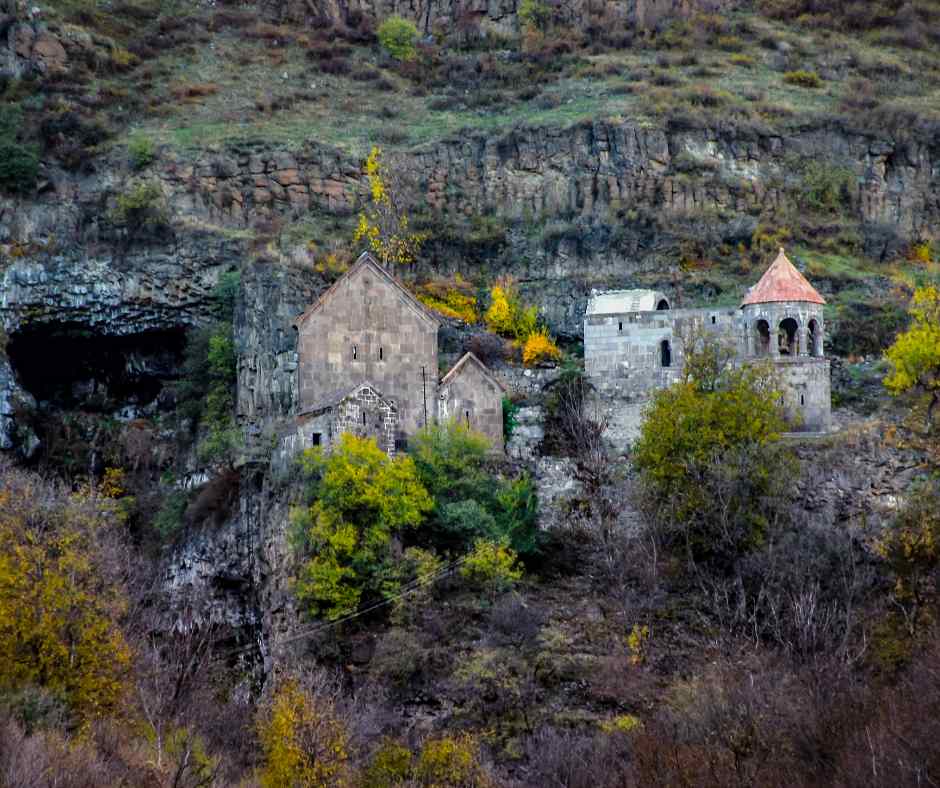
This monastery is one of Lori’s most magical and underrated spots. It’s again located high on a cliff above Debed Canyon, as almost all churches in Lori are. Built in the 12th century, this now partly ruined monastic complex. Most importantly, it still has hauntingly beautiful frescoes that have survived centuries of time and weather. Kobayr once thrived as a major center of education, writing, and faith in medieval Armenia. It was linked to powerful noble families like the Bagratunis, Kiurikians, and later the Zakarians.
Its name might come from a blend of the Georgian “kob” and Armenian “ayr,” both meaning “cave,” which fits as there are ancient monastic cells in the rock. There are frescoes of Christ and 12 apostles and other figures which is not often seen in the Armenian churches.
Hnevank Monastery
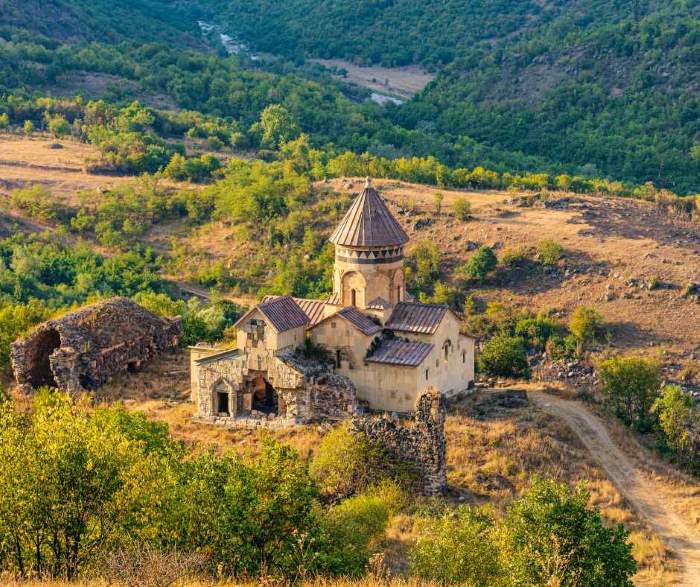
The monastery is on a hill where the Dzoraget and Gargar rivers meet. Hnevank Monastery, which means “Old Monastery” in Armenian, is one of Lori’s most atmospheric historical sites. It’s deep in nature and far from tourist crowds, which will make your visit even better. The main church dates back to the 7th century, though what visitors see today owes much to a major 12th-century restoration by Lord Smbat of the House of Orbelian.
The complex once included multiple churches, a gavit (entry hall), and service buildings. Some ruins nearby, like the two-story residence, hint that it was once a religious and educational center. Today, thanks to ongoing renovations, the once-collapsed dome has been beautifully restored.
Reaching Hnevank is not easy, as the road can be rough, but it’s a paradise for hikers. Once you are there, the first thought is how people managed to reach this place and construct a church in the Middle Ages.
Akhtala Monastery

This old complex dates back to the 10th century. First, it stands out as one of the well-preserved medieval monuments in Armenia. Its original Armenian name, Pghndzahank, hints at the area’s rich copper mines. The crown jewel of the monastery is the Holy Mother of God Church, famous for its breathtaking murals created between 1205–1216.
There is not only a monastery but a fortress, and quite an impressive one. It served as a fortress protecting the northwestern regions of Armenia. The fortress was nearly impossible to invade, thanks to the deep gorges surrounding it. But the real surprise came in the 19th century when French archaeologist Jacques de Morgan explored the area. He discovered 576 ancient stone tombs filled with objects made of clay, bronze, and iron, dating all the way back to the 8th century BC. This proves that Akhtala’s story goes way beyond the medieval era.
Visiting Churches in Lori with Levon Travel
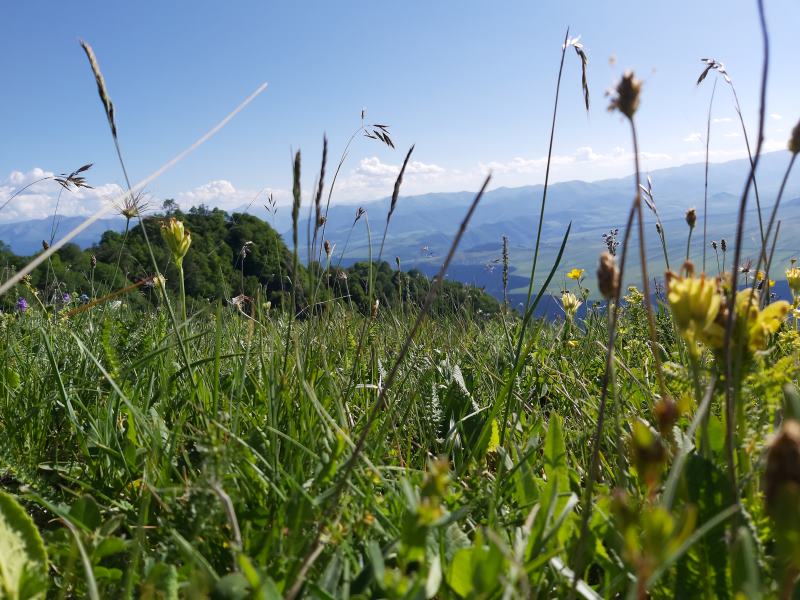
Exploring the Lori region’s churches and monasteries with Levon Travel is a journey into Armenia’s green heart. Part of the agency’s classic tours, the Lori itinerary includes unforgettable stops like Haghpat and Sanahin.
But with Levon Travel, the experience is never one-size-fits-all. If you want to craft your own itinerary to travel around Lori, this is the agency you can contact to make your travel dreams come true.
